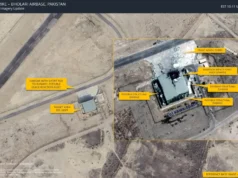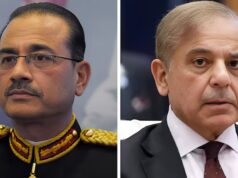Market Liberalization : A Case Study of Coffee Plantation Sector

Faced with the collapse of European coffee markets during the 2nd World War, coffee growers in India prevailed upon the then government to form a Coffee Board to undertake monopoly procurement (pooling) and marketing of all coffee grown in India so as to prevent distress sale of coffee.
Under the pool marketing system which lasted for 50 years until 1992, coffee growers were forced to surrender their entire crop to the Coffee Board for processing and marketing on their behalf. The Coffee Board used to get the pooled coffee processed at private processing units and sell it through;
(a) Export auctions to exporters;
(b) Domestic auctions to roasters in India (at fortnightly intervals) and,
(c) Direct exports to Russia and East European countries under negotiated deals.
Coffee growers were given an initial payment (about 60% of the anticipated final price) from bank borrowing against stocks and periodic payments from sale proceeds after deducting all costs, bank borrowings and taxes. The final payment to growers used to come as late as 2 years from the date of pooling.
The coffee growers suffered huge loss of income as their price realisation was very low vis a vis the international price of coffee due to;
(a) High processing and marketing costs incurred by Coffee Board on which there was no control,
(b) Heavily discounted sale of coffee to domestic roasters (which was not passed on to customers) and under bilateral trade agreements,
(c) High rates of purchase tax levied by State governments as it was very convenient to collect the tax on the trade which was passing through one channel and,
(d) Levy of export duty on coffee whenever there was a rise in international price of coffee.
After prolonged struggle by growers’ organisations, the pooling system was dismantled in stages between 1992-94. Since 1994 growers have been allowed sell their entire produce in the open market. Daily farm gate prices are set by the previous days closing price of New York Mercantile Exchange (NYMEX) for Arabica coffee and London International Financial Futures Exchange (LIFFE) for Robusta coffee. While a few large growers and corporate plantations export/market their produce on their own, small growers sell their raw coffee at the farm gate to local hullers (processors). The local buyers test the samples and buy the coffee at the days’ prevailing (international benchmarked) market price, which is know to all growers. The local hullers after initial processing deliver the coffee to international traders/exporters or to domestic roasters.
To what extent open market has been advantageous to coffee growers can be measured using several criteria.
(a) Price Realisation: The current international prices of coffee beans are now at 1.24 dollars per pound (2.73 dollars per kg) for main graded Arabica and 1300 dollars per ton (1.30 dollars per kg) for Robusta variety. At the exchange rate of ₹73.00 per dollar this translates to a price of about ₹200.00 per kg of washed Arabica beans and ₹95 per kg for Robusta cherry beans, the two main varieties of coffee. Local farm gate prices are however ruling at about ₹240.00 per kg for washed Arabica beans and ₹110.00 per kg of Robusta cherry beans. Indian coffees which are shade-grown, handpicked and sun-dried command a significant premium in world markets compared to major suppliers such as Brazil, Vietnam and Indonesia. It should be noted that Indian growers are getting a farm gate price which is higher than the rates in international Commodity Exchanges. Even the quality premium is being passed onto the growers due to intense competition among exporters and the efficiency of the supply chain. In contrast our own studies and audit reports of CAG of Pool Fund accounts of Coffee Board during the pooling era (prior to 1992) have shown that the final price received by growers on an average was only around 50% of the international exchange prices during the relevant period. Coffee growers have therefore seen a more than 100% improvement in price realisation in the free market era. (If necessary, supporting data can be furnished by me and can also be accessed from Coffee Board archives.)
(b) Free Market & Income: While free market has enabled coffee growers to realise a higher share of the terminal market price at the farm gate, they have not enjoyed growth in real income in recent years. This is because there has been a secular stagnation (decline in real terms) in global coffee prices, as in the case of other agricultural commodities due to global excess production at a time of rising labour and input costs.
(c) Corporates and market dominance: The opponents of the new farm laws have argued that in the long run a few corporates may dominate Agri markets, destroy competition and exploit farmers. Major buyers of coffee in India are;
(i) Giant food companies such as Nestle, Hindustan Unilever and TATA Coffee;
(ii) Global commodity trading companies such as NED Commodities, ECOM Gill, Olam International, etc;
(iii) Large corporates/exporters such as ITC, Madhu Jayanti, Alanasons, Ramesh Exports, etc.
There are also a large number of small roasters and exporters. There is intense competition among all these parties. In the last 26 years, there has been no consolidation or cartelization, let alone a move towards monopolistic domination of the market by any one or two corporates.
This is perhaps because of the complexity of procuring the produce from thousands of small growers and varying quantities and quality of produce of each grower.
What has emerged is a 2-tier marketing system consisting of a first rung of small local traders familiar with local conditions who buy the produce from the farm gate and supply to the larger food companies and trading companies after initial processing. This structure offers ample space for both small traders, entrepreneurs to coexist in a complimentary role with large corporates and MNC’s.
(d) Market Liquidity: Because of the presence of large number of buyers, farmers are able to sell any quantity of coffee at any time of the year and receive prompt payments.
(e) Infrastructure investment: The giant trading and export companies have made massive investments in storage and processing facilities which have helped in maintaining the high quality of Indian coffee and its acceptance in international markets.




